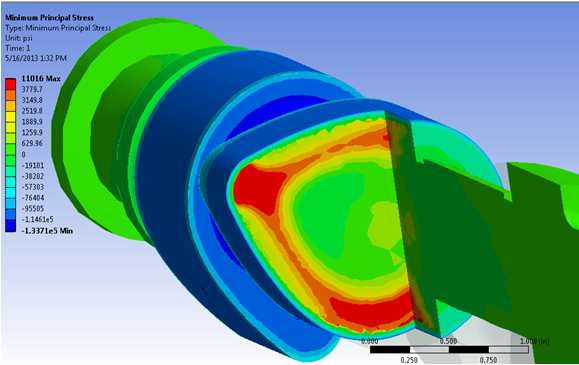Where Does Laser Peening Fit in the Metal Finishing Process?
David Lahrman is a certified trainer for Metal Finishing News International (MFN). David provides insights and instruction on metal finishing for this worldwide network, and he wrote a feature article for the July 2017 issue of MFN Magazine.
Posted: August 7, 2017
By:
MFN International – July Issue – 2017
Laser shock peening is a powerful, targeted method for enhancing metal fatigue strength using high-energy laser pulses. Like shot peening, laser peening imparts beneficial compressive residual stresses in the surface of a component to impede crack initiation and propagation. Unlike shot peening, laser peening is only applied to fatigue-critical areas to provide enhanced resistance where parts are most susceptible to failure. Laser peening is commonly applied along the edges of compressor turbine airfoils to protect against foreign object damage and erosion, or applied along the dovetail root to prevent fretting fatigue, stress corrosion cracking and fracture.
Before laser peening is applied as a production process to a component, the component goes through an application development process to determine laser parameters and processing conditions. The energy, spot size, pulse length, and location of each laser pulse are determined using finite element modeling software to optimize compressive residual stress profiles. Once processing conditions are established, most of the laser peening process is automated. Laser peening systems are integrated with sophisticated robotics for part manipulation and overlay application. The laser system and robots are coordinated to deliver pulses in a precise sequence and pattern for repeatable results.

Laser peening generates a pressure pulse of several million psi on a part surface. The resulting stress wave produces compressive residual stresses up to 12 millimeters deep depending upon processing conditions, material, and component geometry. Laser peening is often applied to parts that are already shot peened to strengthen critical areas where shot peening is not providing sufficient enhancement. While shot peening might be applied across an entire surface, laser peening is applied to a specific area to enhance the residual stress profile and reduce failures in critical locations. Laser peening can be applied before or after shot peening treatments, without any need for masking sensitive areas.

Much like shot peening, laser peening is typically applied after all heat treatments to prevent the relaxation of compressive residual stresses. Even so, laser peening introduces a lower percentage of cold work in the part surface than shot peening, so the material benefits are retained at higher operating temperatures. This is an important feature in the turbine industry, because laser peened compressor airfoils can be placed further back in the engine, even after the combustor in some cases.
Laser peening is typically performed prior to final machining techniques. The process creates small surface deformations, normally 1-5 microns in depth, that can be removed post-process without altering the compressive residual stress profile. The surface texturing is the result of the imprint of the plasma bursts initiated on the part surface by the laser beam, but it’s important to remember that laser peening is a mechanical process that does not heat or melt the component surface. Laser peened parts can be subsequently ground, polished, plated, blasted or superfinished to achieve desired surface finish and part tolerances while retaining the beneficial compressive residual stresses.
Laser peening can be applied to almost any metallic material, and has shown fatigue enhancement benefits in a variety of titanium, nickel, aluminum alloys, and steels. It can be applied to curved surfaces or parts with complex geometries, and the laser can be delivered at an angle up to seventy degrees off the surface normal while maintaining stress wave propagation depth. An opaque ablative overlay (typically paint or tape) is often applied to the part surface to absorb laser energy, but laser peening can be performed without this layer producing minor oxidation that is removed by post-process polishing.
Laser peening is a targeted metal improvement process for fatigue-prone areas of critical components where shot peening is not providing sufficient advantage. It has been applied within the aerospace, power generation, automotive, defense, tooling and manufacturing industries to extend component service lifetimes. Laser peening can be applied at various points within the manufacturing process, and can be combined with other metal finishing processes to achieve optimal surface hardness and finish. Laser peening is an emerging technology that represents another powerful tool for manufacturers and engineers.
Click here to read the article on MFN’s website.
Contact LSPT to learn more about laser peening applications and equipment.
Interested in Seeing More?
Tell us about your application, material, or failure mechanism and we will have one of our experts reach out to you. Our extensive library of research and years of experience gives us a unique advantage to apply a finite element analysis to help diagnose the best application for your situation.
